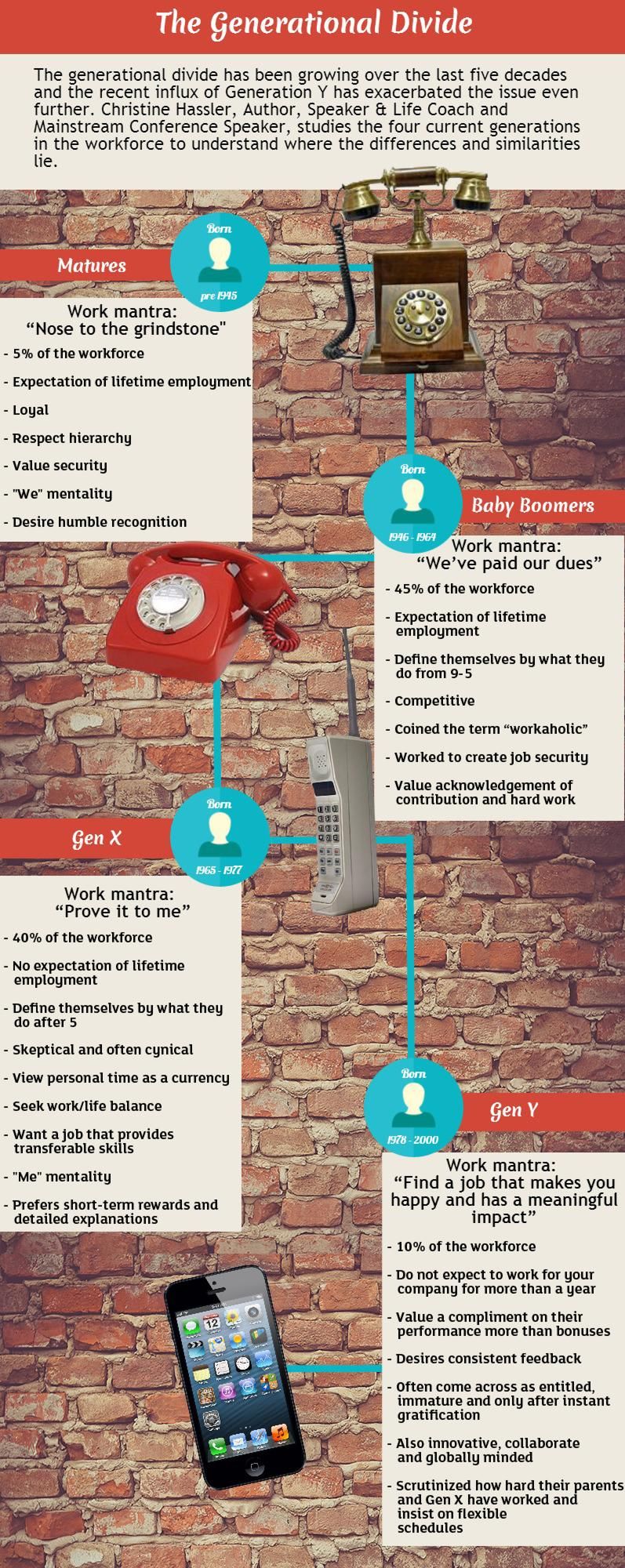Bridging the Great Generational Divide
)
The current professional landscape is rapidly changing as 7 million members of Gen Y are entering the workplace. They currently outnumber every other generation in the global workforce as Matures and Baby Boomers retire. This is creating a significant generational divide as the work ethics and attitudes of Gen Y are exponentially different from the Gen X'ers and Baby Boomers who are hiring, managing, and working with them.
With Gen X being the smallest demographic, members of this generation are facing a unique set of challenges as the “sandwich generationâ€' in the workforce. In conjunction with the skills and preferences gap, many employers lack an intricate understanding of the basic strategies needed to hire and engage the best people from Gen X while continuing to develop and retain more senior employees. And many Gen X'ers lack the knowledge and motivation to rise to the top and become leaders in their industries.
The first step in tackling these generational issues is to understand how each generation views itself, the workplace, and those they work with. Here is an infographic that explains some broad differences between the four major generations in the workforce today.

So even if we accept that each generation is different and have varying workplace priorities and preferences, how do we bridge these gaps?
When navigating a multi-generational workplace, keep in mind that every generation thinks the one after it has it easier than they did. This is demonstrated in the typical generational work mantras suggested in the infographic above. It's typical for each generation to feel that the next generation should pay their dues just as they had to. This is precisely where the problem lies in my opinion.
The biggest obstacle people run into when working across generations is they want another generation to behave, think and work like they do. The best way to remove this obstacle is to understand other generations' workplace preferences and priorities and work with them rather than complain or fight against them. Instead of expecting someone else to share your workplace preferences and priorities find out how their unique preferences can help make your job easier as well as contribute to the company as a whole.
About the Author

Christine Hassler is a renowned expert on bridging generational gaps in the workplace. She has featured extensively on CNN, ABC, CBS, The Wall Street Journal and The New York Times.
Â
.png)

